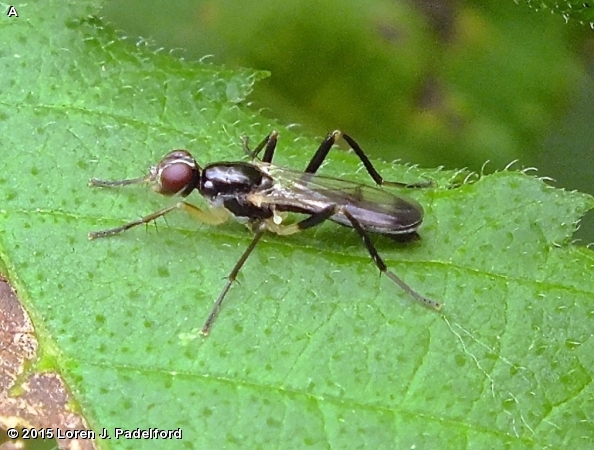
DUNG FLY
Codilura varipes
DUNG FLY FAMILY (Scathophagidae)
A small black fly about 1/2 inch (12 mm) long. It has long black and white legs with white knees. It has large brown eyes and whitish face. At rest the wings are folded flat over the abdomen and white halteres are prominent.
Little is known about the distribution of this fly but it has been reported from several eastern states. It is probably uncommon in this area. It was photographed in late May 2015 in Fontenelle Forest.
This fly is a predator of other insects. The only reference to be found about its prey is from a 1982 paper reporting that it was seen predating the nymphs of Culicoides variipennis, a biting midge in the family Ceratopogonidae. Eggs are laid in developing stems of sedges. The larvae live and develop inside the stems and pupate. The pupae overwinter in the sedges. Adults emerge in late spring and early summer. A second generation of adults appears in late summer and early fall.* * From a paper titled “Observations on the Immature Stages of Cordilura … varipes, S. E. Neff, J. B. Wallace, 15 July 1969.
Disclaimer: The content of NatureSearch is provided by dedicated volunteer Naturalists of Fontenelle Forest who strive to provide the most accurate information available. Contributors of the images retain their copyrights. The point of contact for this page is: Loren Padelford.
